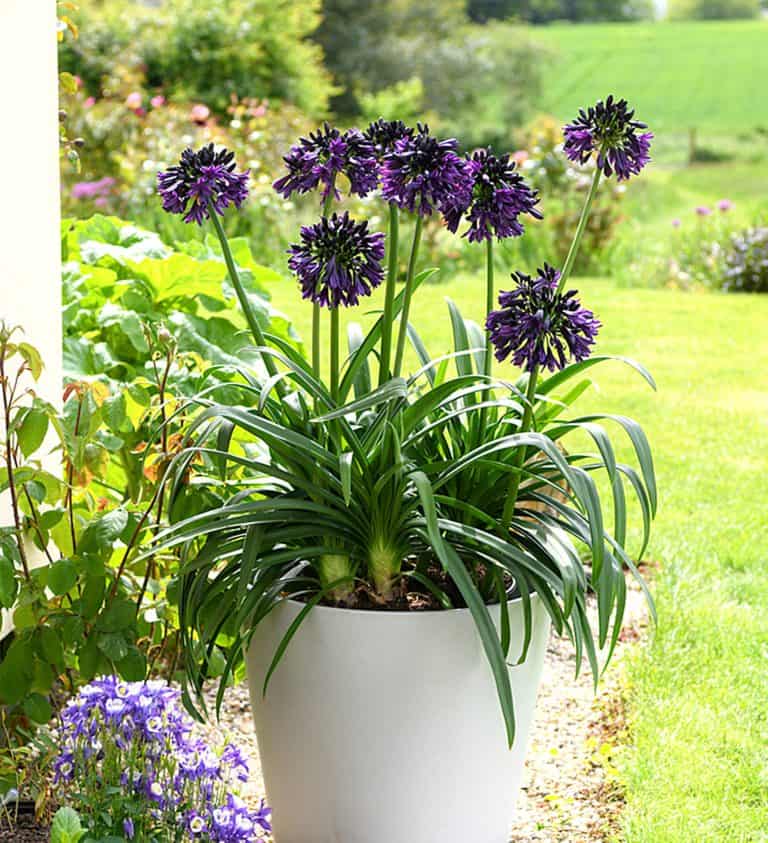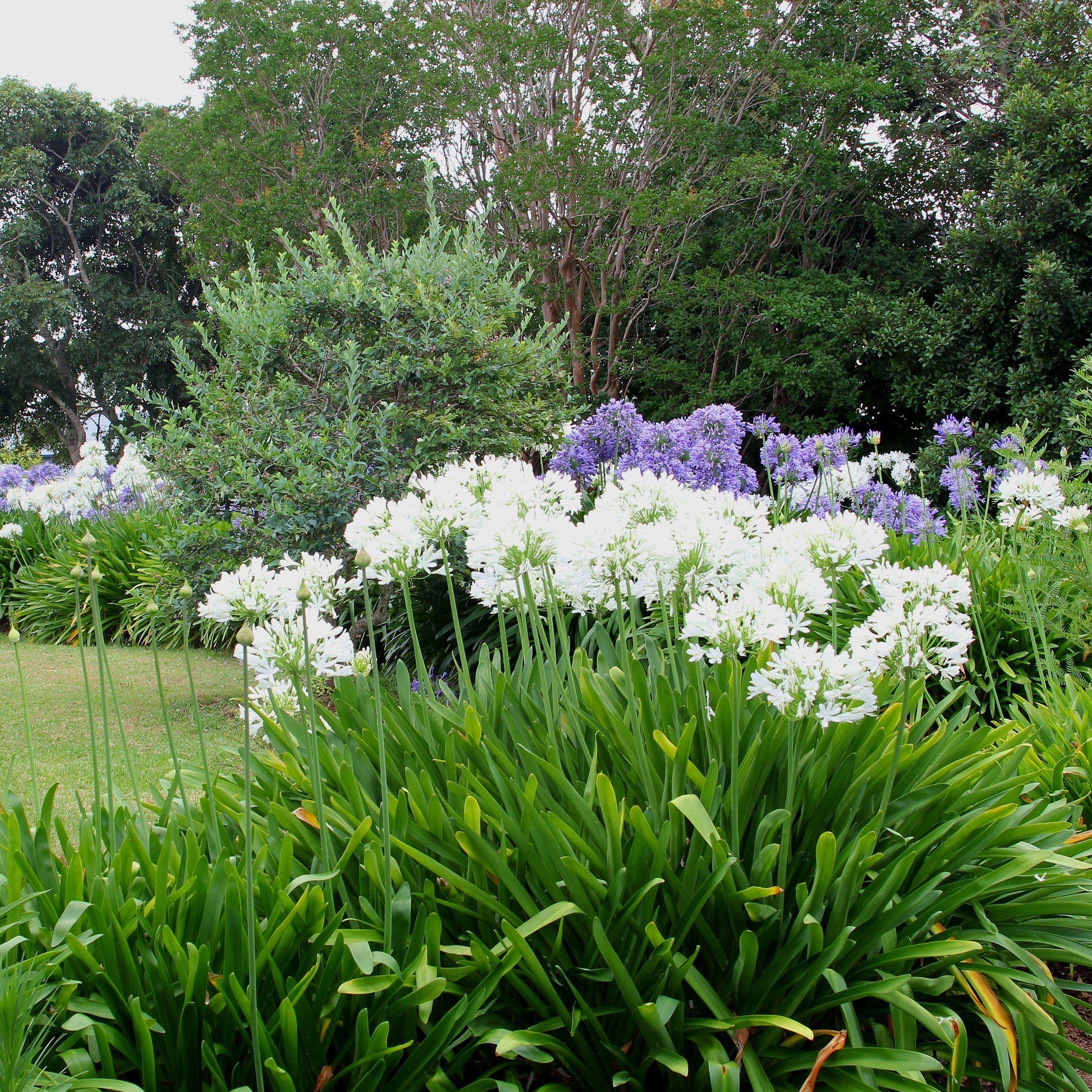Agapanthus Treatment Tips for Lush and Vibrant Flowers
Agapanthus Treatment Tips for Lush and Vibrant Flowers
Blog Article
Releasing the Secret to Successful Agapanthus Growing: Idea for a Flourishing Garden
In the realm of gardening, growing agapanthus effectively requires a tactical technique that includes different elements of plant care. With careful focus to information, one can unlock the tricks to nurturing these stunning flowers, leading to a yard that flourishes with charm and vibrancy. By understanding the nuances of agapanthus growing, one can produce an environment where these plants grow and bloom abundantly. In the adhering to discussion, we will certainly explore important tips and tricks that will assist you towards a thriving agapanthus yard, using understandings into ideal methods, soil problems, sprinkling techniques, and much more.
Growing Agapanthus: Ideal Practices
When growing Agapanthus, correct soil prep work is important for making sure effective development and growth of these lovely flowers. Agapanthus, generally referred to as Lily of the Nile or African lily, flourishes in well-draining soil with a somewhat acidic to neutral pH degree - Agapanthus. Prior to growing, it is important to amend heavy clay dirts with raw material such as garden compost or peat moss to enhance drain and offer necessary nutrients for the plants
To grow Agapanthus, choose an area that receives full sunshine to partial color, as this will advertise healthy and balanced growth and plentiful flowering. Dig an opening twice the diameter of the plant's origin sphere and position the Agapanthus at the same deepness it was previously expanding. Gently backfill the hole with dirt, weighing down strongly to eliminate any air pockets around the roots.
Water the newly grown Agapanthus thoroughly and continue to maintain the soil uniformly moist, specifically throughout the plant's active expanding period. Agapanthus. Using a well balanced plant food once a month can better support the plant's growth and blooming. By following these ideal techniques for planting Agapanthus, you can create a spectacular display of these exciting flowers in your garden
Suitable Soil Conditions for Agapanthus
For ideal development and flowering success of Agapanthus plants, ensuring the dirt problems are suitable is critical. Agapanthus chooses dirt that is rich in nutrients, so integrating a balanced fertilizer throughout the growing period can promote healthy and balanced development and lively blossoms.

Watering and Feeding Tips
To make sure healthy and balanced development and dynamic blooms, proper watering and feeding methods are vital for successful Agapanthus cultivation. Agapanthus plants profit from routine watering, particularly during the expanding season.
When it pertains to fertilizing Agapanthus, a well balanced fertilizer with equivalent parts nitrogen, phosphorus, and potassium can be applied in the spring to advertise healthy and balanced growth and flowering. Slow-release plant foods are suitable for supplying nutrients gradually over a prolonged period. Prevent over-fertilizing, as this can cause excessive vegetation development at the expenditure of flowers.
Additionally, incorporating organic issue like compost right into the dirt can enhance nutrient levels and improve dirt structure, assisting in the general health of the Agapanthus plants. By adhering to these watering and fertilizing pointers, gardeners can guarantee their Agapanthus plants flourish and produce magnificent screens of flowers.
Pruning and Deadheading Techniques
Proper trimming and deadheading methods play an essential duty in preserving the health and aesthetic appeals of Agapanthus plants, complementing the crucial methods of watering and fertilizing for effective farming. Pruning Agapanthus involves eliminating spent blossom heads, yellowing or dead fallen leaves, and overall shaping of the plant to advertise better growth. Deadheading, the procedure of removing faded flowers, not just boosts the plant's appearance but likewise urges further flowering.
When deadheading Agapanthus, it is advisable to clip off the blossom stem at the base utilizing sharp, clean shears. This process reroutes the plant's power from seed production back right into root and foliage development, promoting a healthier and extra durable plant. Normal deadheading can expand the flowering duration of Agapanthus and protect against self-seeding, which can result in congestion.
In terms of pruning, Agapanthus generally take advantage of a light trim after blossoming to clean the plant and urge fresh growth. Cutting back the spent flower stems and removing any dead or broken foliage helps keep the plant's vigor and general look. Nonetheless, it is vital to stay clear of reducing into the crown of the plant, as this can compromise its health and wellness.

Protecting Agapanthus From Pests and Diseases
Implementing effective insect and disease administration methods is critical to protecting the health and wellness and vitality of Agapanthus plants in cultivation. Agapanthus are normally sturdy plants, why not try this out however they can still succumb to various bugs and illness if not correctly cared for. One usual parasite that influences Agapanthus is the Agapanthus borer, a caterpillar that passages into the plant, triggering damage to the fallen leaves and flowers. To stop invasions, routine inspection of the plants is important. If borers are discovered, they can be by hand eliminated, or insecticidal soap can be used as a control action.
Along with insects, Agapanthus are at risk to diseases such as origin rot and fungal leaf places. These problems can frequently be protected against by making sure appropriate drainage and preventing overwatering. Influenced parts of the plant need to be immediately eliminated to prevent additional spread if indications of condition appear. Fungicides look at this website may additionally be used as a therapy step, complying with the maker's instructions very carefully. By staying alert and addressing insect and condition issues quickly, gardeners can help their Agapanthus prosper and thrive.

Conclusion
Finally, effective farming of agapanthus calls for correct growing strategies, optimal dirt conditions, appropriate watering and feeding, routine trimming and deadheading, and defense from conditions and parasites. By adhering to these tips and methods, garden enthusiasts can ensure a growing garden loaded with attractive agapanthus blossoms. Agapanthus. Bear in mind to preserve constant care and attention to detail to promote the health and wellness and durability of these stunning plants
When growing Agapanthus, correct dirt preparation is important for ensuring effective growth and development of these lovely flowers.Water the newly grown Agapanthus completely and continue to maintain the soil equally moist, especially throughout the plant's energetic expanding season.For optimal development and blooming success of Agapanthus plants, guaranteeing the dirt conditions are perfect is essential. When transplanting or growing Agapanthus, guarantee the soil is well-prepared to supply the required structure for the plants to develop themselves successfully. One common parasite that impacts Agapanthus is the Agapanthus borer, a caterpillar that passages right into the plant, creating damages to the leaves and look what i found flowers.
Report this page